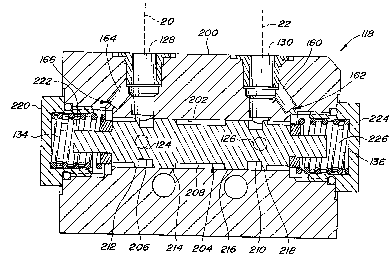Some of the information on this Web page has been provided by external sources. The Government of Canada is not responsible for the accuracy, reliability or currency of the information supplied by external sources. Users wishing to rely upon this information should consult directly with the source of the information. Content provided by external sources is not subject to official languages, privacy and accessibility requirements.
Any discrepancies in the text and image of the Claims and Abstract are due to differing posting times. Text of the Claims and Abstract are posted:
| (12) Patent: | (11) CA 2316482 |
|---|---|
| (54) English Title: | IMPROVED BRAKE VELOCITY FUSE |
| (54) French Title: | FUSIBLE AMELIORE POUR REPONSE DE FREINAGE |
| Status: | Expired and beyond the Period of Reversal |
| (51) International Patent Classification (IPC): |
|
|---|---|
| (72) Inventors : |
|
| (73) Owners : |
|
| (71) Applicants : |
|
| (74) Agent: | BORDEN LADNER GERVAIS LLP |
| (74) Associate agent: | |
| (45) Issued: | 2005-02-15 |
| (22) Filed Date: | 2000-08-15 |
| (41) Open to Public Inspection: | 2001-06-06 |
| Examination requested: | 2000-08-15 |
| Availability of licence: | N/A |
| Dedicated to the Public: | N/A |
| (25) Language of filing: | English |
| Patent Cooperation Treaty (PCT): | No |
|---|
| (30) Application Priority Data: | ||||||
|---|---|---|---|---|---|---|
|
An improved the velocity fuse valve controls communication between first and
second brake valves and first and second brake lines. The velocity fuse valve
includes a
valve housing having a valve bore which slidably receives a valve spool. The
spool moves
in response to pressure in first and second pilot chambers, each communicated
with a
corresponding first and second outlet. The first pilot chamber is communicated
with the first
outlet via a first dashpot passage and a first orifice, and the second pilot
chamber is
communicated with the second outlet via a second dashpot passage and a second
orifice.
The orifices reduce or control how fast the spool will move in response to the
pressure
differential between the pilot chambers.
Note: Claims are shown in the official language in which they were submitted.
Note: Descriptions are shown in the official language in which they were submitted.

2024-08-01:As part of the Next Generation Patents (NGP) transition, the Canadian Patents Database (CPD) now contains a more detailed Event History, which replicates the Event Log of our new back-office solution.
Please note that "Inactive:" events refers to events no longer in use in our new back-office solution.
For a clearer understanding of the status of the application/patent presented on this page, the site Disclaimer , as well as the definitions for Patent , Event History , Maintenance Fee and Payment History should be consulted.
| Description | Date |
|---|---|
| Time Limit for Reversal Expired | 2008-08-15 |
| Letter Sent | 2007-08-15 |
| Inactive: IPC from MCD | 2006-03-12 |
| Grant by Issuance | 2005-02-15 |
| Inactive: Cover page published | 2005-02-14 |
| Inactive: Final fee received | 2004-11-29 |
| Pre-grant | 2004-11-29 |
| Notice of Allowance is Issued | 2004-06-03 |
| Letter Sent | 2004-06-03 |
| Notice of Allowance is Issued | 2004-06-03 |
| Inactive: Approved for allowance (AFA) | 2004-05-25 |
| Amendment Received - Voluntary Amendment | 2003-10-03 |
| Inactive: S.30(2) Rules - Examiner requisition | 2003-05-07 |
| Amendment Received - Voluntary Amendment | 2003-04-07 |
| Inactive: S.30(2) Rules - Examiner requisition | 2003-01-03 |
| Letter Sent | 2001-11-28 |
| Inactive: Correspondence - Transfer | 2001-10-30 |
| Inactive: Office letter | 2001-10-17 |
| Letter Sent | 2001-10-17 |
| Inactive: Single transfer | 2001-08-30 |
| Application Published (Open to Public Inspection) | 2001-06-06 |
| Inactive: Cover page published | 2001-06-05 |
| Inactive: IPC assigned | 2000-10-24 |
| Inactive: IPC assigned | 2000-10-24 |
| Inactive: First IPC assigned | 2000-10-24 |
| Inactive: Filing certificate - RFE (English) | 2000-09-27 |
| Inactive: Courtesy letter - Evidence | 2000-09-27 |
| Application Received - Regular National | 2000-09-12 |
| Request for Examination Requirements Determined Compliant | 2000-08-15 |
| All Requirements for Examination Determined Compliant | 2000-08-15 |
There is no abandonment history.
The last payment was received on 2004-07-22
Note : If the full payment has not been received on or before the date indicated, a further fee may be required which may be one of the following
Patent fees are adjusted on the 1st of January every year. The amounts above are the current amounts if received by December 31 of the current year.
Please refer to the CIPO
Patent Fees
web page to see all current fee amounts.
| Fee Type | Anniversary Year | Due Date | Paid Date |
|---|---|---|---|
| Request for examination - standard | 2000-08-15 | ||
| Application fee - standard | 2000-08-15 | ||
| Registration of a document | 2000-08-15 | ||
| MF (application, 2nd anniv.) - standard | 02 | 2002-08-15 | 2002-08-14 |
| MF (application, 3rd anniv.) - standard | 03 | 2003-08-15 | 2003-08-14 |
| MF (application, 4th anniv.) - standard | 04 | 2004-08-16 | 2004-07-22 |
| Final fee - standard | 2004-11-29 | ||
| MF (patent, 5th anniv.) - standard | 2005-08-15 | 2005-07-20 | |
| MF (patent, 6th anniv.) - standard | 2006-08-15 | 2006-07-17 |
Note: Records showing the ownership history in alphabetical order.
| Current Owners on Record |
|---|
| DEERE & COMPANY |
| Past Owners on Record |
|---|
| SCOTT DAVID DUNBAR |
| TIMOTHY LLOYD VALENTIN |